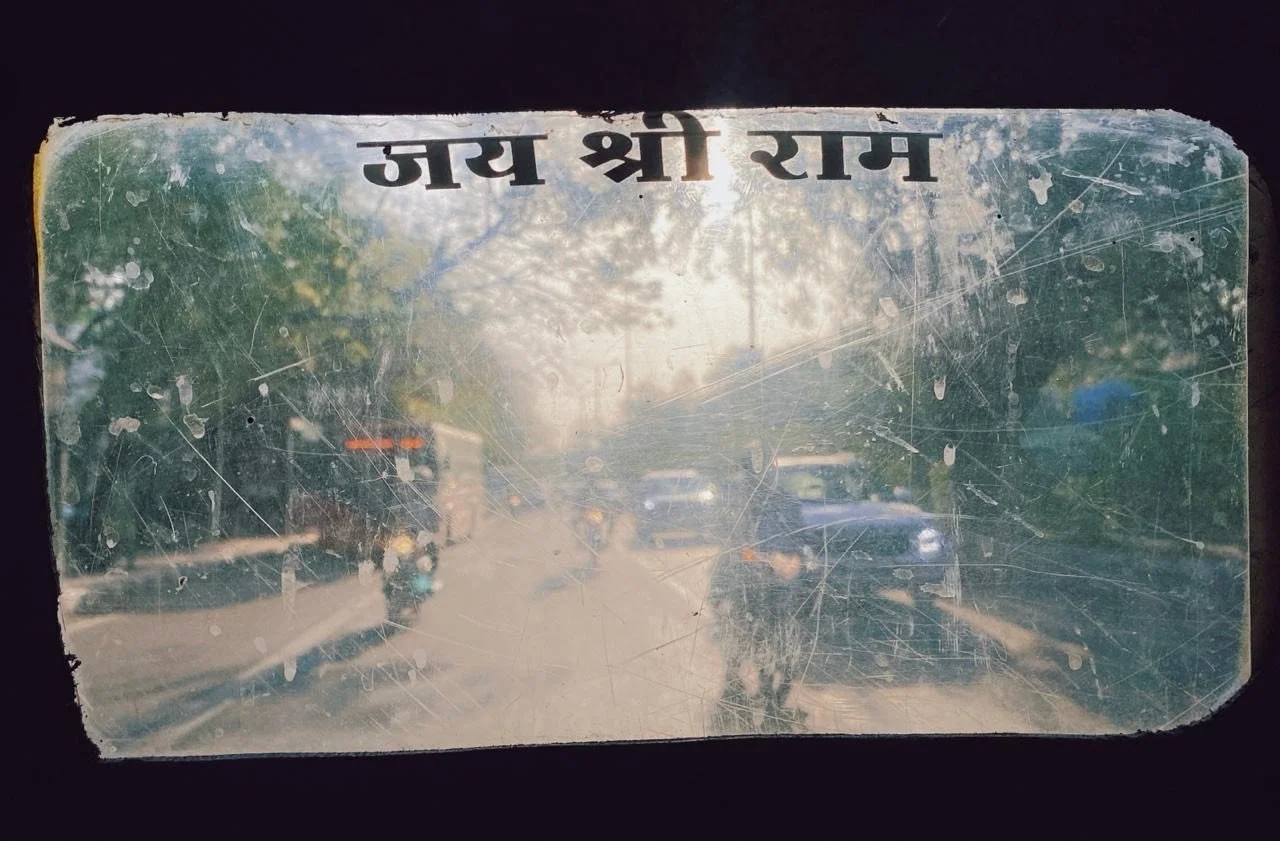Religious Tensions Drive India’s Booming Bumper Sticker Economy
NEW DELHI — On any given day in India’s capital, cars whiz through crowded roads with their rear windshields reading the word, “HINDU.” Small gas tanks boasts “Brahman” — a member of the highest Hindu — while the bright yellow hoods of auto rickshaws declare “Jai Sri Ram,” an expression meaning "Victory to Lord Rama.”
On these busy streets, vehicles adorned with Hindu symbols are more than just modes of transport — they have increasingly become mobile expressions of political and religious identity. The proliferation of these Hindu stickers has transformed everyday commuting, a phenomenon deeply intertwined with rising religious tensions.
A decades-long flashpoint in India’s sectarian politics reached a climax last year with the inauguration of Ram Mandir, a temple on a contested holy site that was once home to a mosque in the city of Ayodhya, in India’s northern Uttar Pradesh state.
READ: The Tension In India Between Free Speech And Religion
For Hindus, the site marks the birthplace of Lord Ram, one of the most revered deities in the Hindu faith. Ram Mandir also marked a turning point in the popularity of religious symbols on vehicles.
A sticker shop owner named Gaurav, who did not want to give his last name, said, “When Hindu-Muslims riots happen, that is when the sticker sales go up.”
In the four years he’s owned the shop, he said the most orders have come around the time of the Ram Mandir’s inauguration.
“Everyday, at least five to ten people came for Jai Sri Ram stickers,” he added.
But Gaurav isn’t always turning a profit: “I gave them out for free!”
Photos by Riya Singh Rathore and Shadab Farooq
Other sticker shops, like the one owned by Sayam Gupta, made 12,000 rupees ($140) a day for three months after the temple’s inauguration.
The sticker phenomenon, an overt demonstration of Hindu nationalism, captured the imagination of several influences. In one video, the windshield of a black Thar Roxx vehicle is seen with a radium Ram’s as he pulls back an arrow with a saffron “Jai Sri Ram” written beneath it.
It’s an example, several shopkeepers told Religion Unplugged, that confirms that Hindu sticker sales began only after 2014, when the government of Narendra Modi came to power. These stickers convey the message that this isn’t simply a vehicle — but a Hindu’s vehicle.
In neighborhoods like New Delhi’s Jamia Nagar, a Muslim-majority area, these decals has politicized daily commuting.
“They do not take you there,” said a woman who only gave her name as Anusha, a local resident. “They just say, ‘madam, we will not go there and there are a lot of police there.’”
While many see these stickers as simple decorations, others view such religious symbols as markers of communal segregation. Other residents added that many Uber drivers who are Hindu do not accept rides based on the passengers’ name.
Hera, a Muslim woman who did not want to give her last name, said such slogans make her feel unsafe.
"I feel unsafe and uncomfortable seeing those stickers, the saffron flags with ‘Jai Sri Ram’ written on it have a much greater connotation this time,” she said. “It is presented more as a war cry, more like a tactic to reclaim public spaces and project the idea that minorities should ‘know their place'.’”
Stickers can cost anywhere between 35 cents to 60 cents and see spikes during various times of the year. And despite authorities often stopping vehicles thtat have such stickers, drivers continue to display them — especially ones highlighting certain castes. This includes the example of Indian film director Anuradha Tiwari, who had a “Brahmin Genes” sticker complete with books, axe, a bicep and the spiritual symbol known as Om. She posted on X, “Torchbearer of Hinduism. Proud to be a Brahmin!”
Despite this boom, displaying such stickers is against the law. Under Section 177 of the India’s Motor Vehicle Act, stickers and adhesive labels are not permitted, especially ones disclosing caste, religion, profession and political affiliation.
Last year, during a two-week blitz against illegal stickers, police in the city of Noida issued 5,405 fines to vehicle owners. Of these, 3,430 fines were levied for putting up caste-based stickers.
Nonetheless, it hasn’t stopped drivers from displaying religious messages and symbols.
"We use these stickers because it is our identity,” said Amar Singh, whose Delhi rickshaw displays Hindutva stickers, “and also brings good luck.”
Shadab Farooq is an independent journalist based in New Delhi, India.
Riya Singh Rathore is based in India and works as a researcher and editor.




